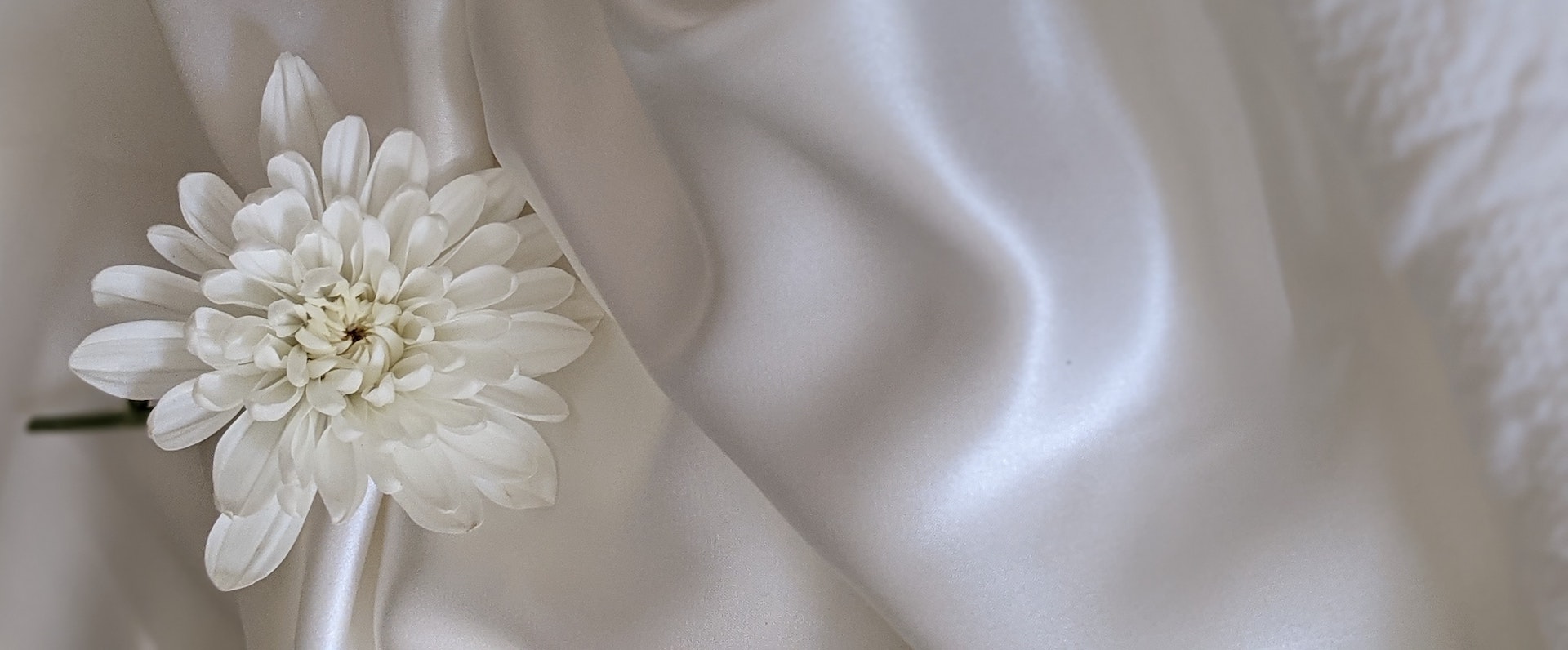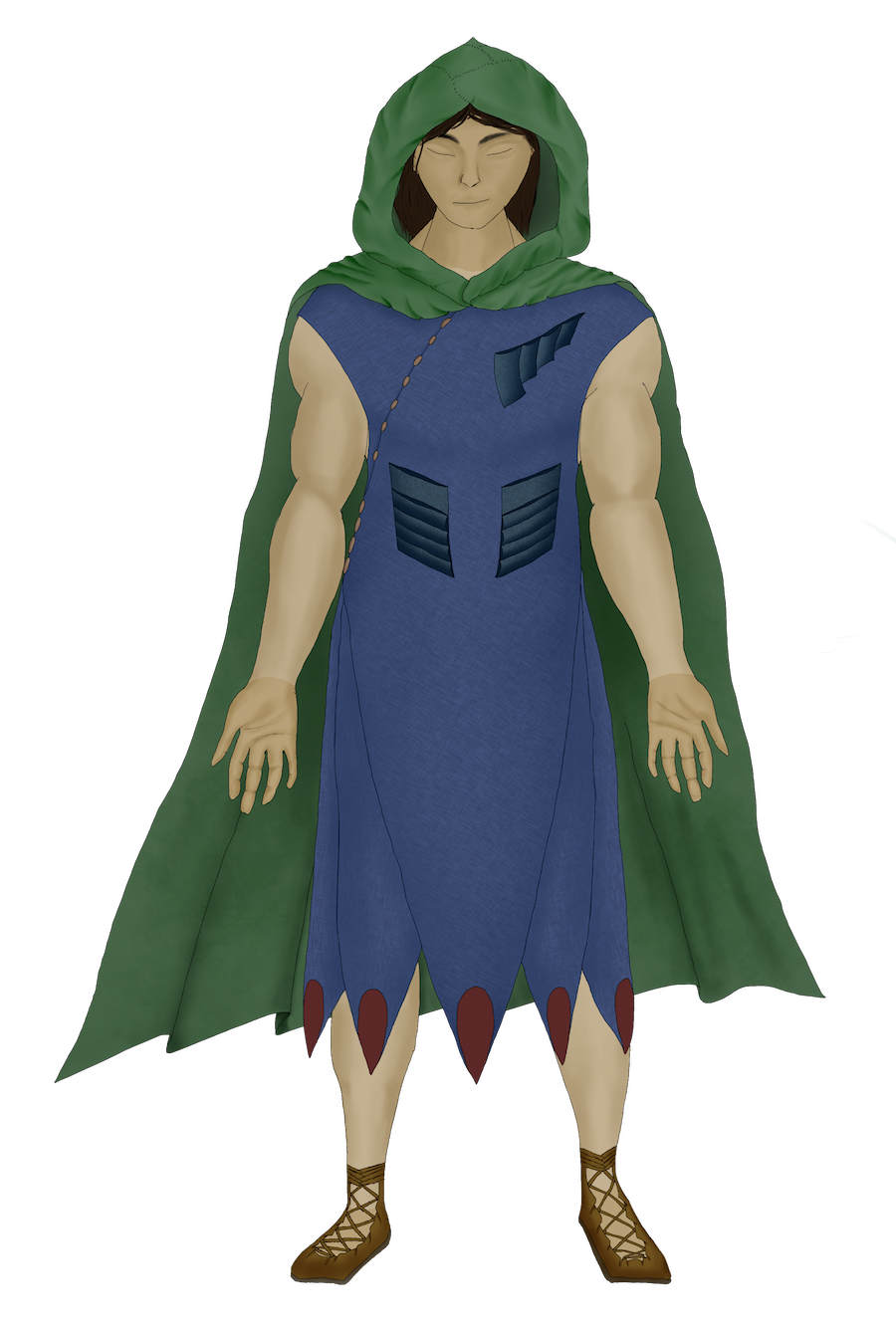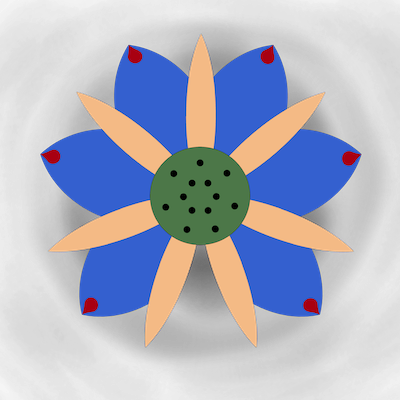Éadaí lile uisce
Robes do not make a person. Robes are the person.
General info
By just looking at the Éadaí you could tell the region they were coming from, their rank and expertise in the field [of weave and harvesting]. Mind that each embroidery was special. One could not fake a connection with Ædean realm. No man is known to possess such skills.
Lotus harvesters are known in Cymru for two special skills: harvesting high quality silk from the blue lotus and weaving their bodies with the unique Ædean representation of the blue lotus. It is owning to the latter that the Éadaí form a strong connection to their lotus fields, making harvesters themselves exhibit characteristic plant traits, e.g., regeneration, hibernation. There are limits of course and a trick to it, connected to the blood lotus ritual but it's not a common knowledge. And since not everyone sees the Ædean paths, the story is passed down in many variations more befitting a colorful legend than a real-life truth.
The Éadaí takes resemblance after the blue lotus, a water plant very often found in shallow lakes and ponds all around Cymru.
Second skin and more...
First impression
One of them had a barely visible lacing on their forearm resembling a pale blue lotus with a pair of darker petals, characteristic of the northeastern Cymru. You could tell they came from an old line of harvesters but did not make a name for them yet. It is a common custom to embroid a link of oneself to the lacing. And that one... conveyed no feeling whatsoever.
Unless the harvester wears a cloak, the garment resembles a blue lotus at bloom. Its colouring is very characteristic as the dyes with such intensity are not frequently used. The closer the wearer comes, the more details emerge: blood red droplets of the blood lotus, the number of petals, the wooden pegs, the light and mat second skin...
The layering
The garment can be broken down into several layers:
- inner - sometimes refered to as the skin layer, second skin or blood layer; this is made exclusively from the silk whose seedling was nourished with the blood of the wearer.
- middle - protecting the body from external conditions, e.g., physical damage.
- external - a cloak with a hood
The second skin is very thin and flexible, forming a firm contact with the born skin, responsible for transpiration and responding to the atmospheric conditions, i.e., the pores adjust in number and size to enhance transpiration during the dry&hot weather as opposed to the humid&cold. At some regions, especially near the Summer Forest, a common addition is to include the root fibers to gather and guide the water that does not transpire fast enough. It speeds up the drying process as well.
The middle layer is formed from eight sections that overlap in the lower part, resembling the second crown of the blood lotus's petals, that become a single once sliced through the side and fastened with 12 wooden pegs (four on the side, eight on the chest). This is the part, where the most precious tools are kept. Traditionally the heart tools are kept close to the heart. The others, e.g., the harvester knives are placed in special horizontal pockets that trace the lines of the ribs so as to not constrain the movements. The shape and colouring of the lotus petal crown is region-characteristic.
Special feature, often exploited in the garments are the flexible pockets. They are made of two skin layers, sewed together at the sides. Each layer has a set of parallel slits through which skin tapes are interlaced to form separators. The pockets can be moved freely. A more rigid approach uses wooden or bone separators.

Second glance
...and while we were travelling to Ceg-yr-Afon I learned a lot about my co-travellers from Cymru. Things, that I did not, maybe even could not see at the first glance, but now became so apparent, I could not unsee them. There is more that meets the eye, they say, but the outfits...
Things to remember
There are two types of lotus silk threads, that one can harvest, i.e.:
- heart silk - from the stalks that end with flowers
- palm silk - from the stalks that end with leaves
Cultural reference
After she became a skald, Scathach did not abandon her link to the lotus harvesters. It showed on her lute and harp - she used the heart string to be entered into the strings, along with 3 of 'er hair, which reminded of the trial of Svis. The 13 petal lotus remained on the back of her coat. A single glance at it showed it was recognized by the Artbearers and that it had witnessed many Blooms. It gave away a vibe of a person you knew for a number of years, and experienced at entering the Æter's turmoil.
What Scathach did, was undoing the embroidery made from the heart thread and separated it into three smaller ones, embroiding three lotus flowers. One was left at the back of her cloak as the tradition suggested. One was laced into the second skin on the upper part of her chest. And, finally, the last, as part of the tatting lace, replaced the rosette in her lute.
Potential threats
When wet their cloaks become as slippery as an eel, so I'd suggest avoiding them lot at that time. Unless you want to break a love spell. Then it works like a charm.
Éadaí was shaped carefully by many generations of lotus harvesters and it shows visibly when examining the cloak. The material is thin and flexible, darkish green in colour and mat, very much like a linen fabric... Until it gets wet. Then it becomes glossy and slippery, a trait which not only keeps the wearer dry. It ensures that the cloak does not get in the way, should the wearer be forced to swim in it.
Though rare, history recorded several incidents of people drowning, in all cases which was the result of the current owner of the cloak not aware of the property.












'this is made exclusively from the silk whose seedling was nourished with the blood of the wearer.' Well, that's terrifying. I absolutely love the concept of this and the detail that you've gone into about the construction of it. The whole article makes me feel rather uncomfortable... but I like it more because of that. :D
Lol... :D The concept of blood sacrifice has indeed a bad PR, so I'll have to write more about it to give it a more... gentle and casual feel. Only now that you mentioned how it makes you feel, Emy, I realized that the reader may think of the "second skin" as something creepy and living, sort of like a bug... but worse. :D
*horrified face*